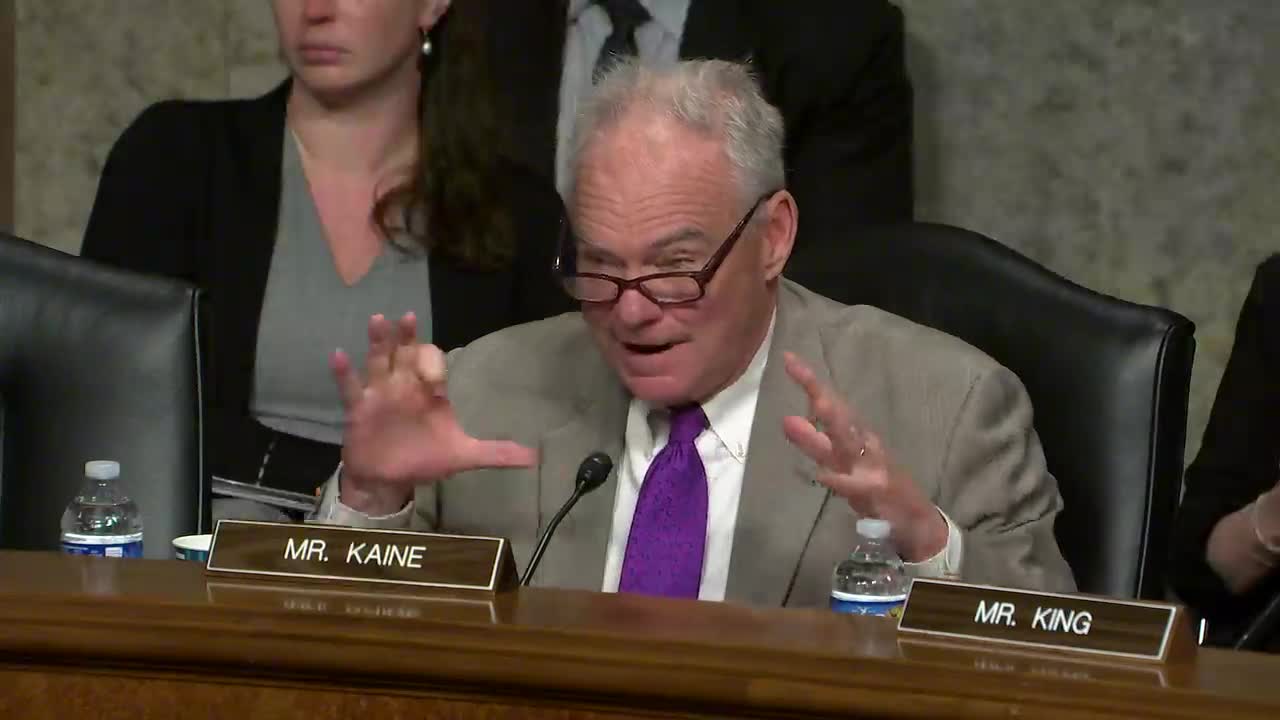Senate Committee Discusses Civilian Workforce Challenges and Technology Advancements in Navy
July 31, 2025 | Armed Services: Senate Committee, Standing Committees - House & Senate, Congressional Hearings Compilation
This article was created by AI summarizing key points discussed. AI makes mistakes, so for full details and context, please refer to the video of the full meeting. Please report any errors so we can fix them. Report an error »

In a recent U.S. Senate Committee on Armed Services hearing, key discussions centered on the future of the Navy and its operational readiness, particularly in light of personnel management and technological advancements. The meeting highlighted the importance of maintaining a robust civilian workforce and integrating reservists into the Navy's mission, which is crucial for national security.
Senators raised concerns about the Navy's ability to adapt its workforce effectively while ensuring operational readiness. One nominee emphasized the need for data-driven decisions regarding workforce adjustments, suggesting that programs similar to the Transition Assistance Program (TAPS) could facilitate smoother transitions for military personnel into civilian roles. This approach could help retain valuable skills within the Navy and support the local economy by leveraging expertise from various sectors.
Another significant topic was the urgency of advancing critical technologies, particularly in hypersonic warfare and quantum computing. With threats from adversaries like China on the rise, the need for accelerated testing and evaluation of these technologies was underscored. A nominee acknowledged the innovative environment in places like Huntsville, Alabama, and expressed a commitment to enhancing operational testing processes to keep pace with global advancements.
The hearing also addressed the Navy's recruitment challenges, particularly in key sea billets. Senators discussed the success of the Army's Future Soldier Preparatory Course and explored the possibility of implementing similar programs in the Navy to attract and prepare new recruits. This initiative could help address personnel shortages and improve retention rates, which are vital for maintaining a strong naval force.
Quality of life for service members was another pressing issue. Senators highlighted the need for better living conditions, especially during maintenance periods, to support recruitment and retention efforts. The commitment to improving these conditions reflects a broader goal of ensuring that service members and their families have a supportive environment.
As the Navy prepares for future challenges, the discussions from this hearing signal a proactive approach to workforce management, technological advancement, and quality of life improvements. These efforts are essential not only for the Navy's operational success but also for fostering community support and engagement with the military. The outcomes of these discussions will likely shape the Navy's strategies in the coming years, directly impacting local communities and the nation’s defense posture.
Senators raised concerns about the Navy's ability to adapt its workforce effectively while ensuring operational readiness. One nominee emphasized the need for data-driven decisions regarding workforce adjustments, suggesting that programs similar to the Transition Assistance Program (TAPS) could facilitate smoother transitions for military personnel into civilian roles. This approach could help retain valuable skills within the Navy and support the local economy by leveraging expertise from various sectors.
Another significant topic was the urgency of advancing critical technologies, particularly in hypersonic warfare and quantum computing. With threats from adversaries like China on the rise, the need for accelerated testing and evaluation of these technologies was underscored. A nominee acknowledged the innovative environment in places like Huntsville, Alabama, and expressed a commitment to enhancing operational testing processes to keep pace with global advancements.
The hearing also addressed the Navy's recruitment challenges, particularly in key sea billets. Senators discussed the success of the Army's Future Soldier Preparatory Course and explored the possibility of implementing similar programs in the Navy to attract and prepare new recruits. This initiative could help address personnel shortages and improve retention rates, which are vital for maintaining a strong naval force.
Quality of life for service members was another pressing issue. Senators highlighted the need for better living conditions, especially during maintenance periods, to support recruitment and retention efforts. The commitment to improving these conditions reflects a broader goal of ensuring that service members and their families have a supportive environment.
As the Navy prepares for future challenges, the discussions from this hearing signal a proactive approach to workforce management, technological advancement, and quality of life improvements. These efforts are essential not only for the Navy's operational success but also for fostering community support and engagement with the military. The outcomes of these discussions will likely shape the Navy's strategies in the coming years, directly impacting local communities and the nation’s defense posture.
View full meeting
This article is based on a recent meeting—watch the full video and explore the complete transcript for deeper insights into the discussion.
View full meeting